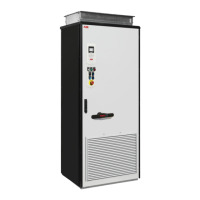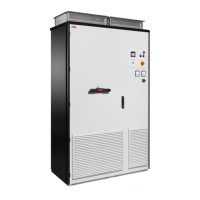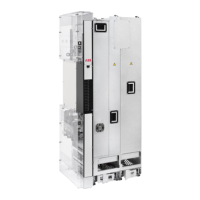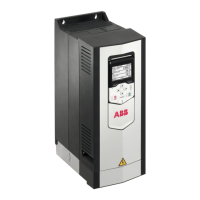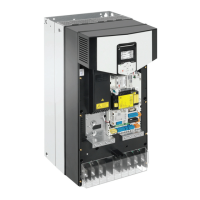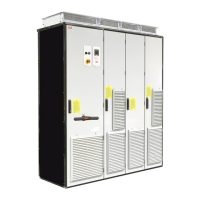Use as motor cablingUse as input power cablingCable type
YesYes
Symmetrical shielded (or armored)
cable with three phase conductors
and a shield (or armor), and separ-
ate PE conductor/cable
1)
1)
A separate PE conductor is required if the conductivity of the shield (or armor) is not sufficient for the PE use.
Alternate power cable types
Use as motor cablingUse as input power cablingCable type
Yes with phase conductor smaller
than 10 mm
2
(8 AWG) Cu, or motors
up to 30 kW (40 hp)
Yes
Four-conductor cabling in metal
conduit (three phase conductors and
PE), eg, EMT, or four-conductor ar-
mored cable
Yes with motors up to 100 kW
(135 hp). A potential equalization
between the frames of motor and
driven equipment is required.
Yes
Shielded (Al/Cu shield or armor)
1)
four-conductor cable (three phase
conductors and a PE)
NoYes
WARNING!
If you use unshielded
single-core cables in an IT
network, make sure that the
non-conductive outer
sheath (jacket) of the cables
have good contact with a
properly grounded conduct-
ive surface. For example,
install the cables on a prop-
erly grounded cable tray.
Otherwise voltage may be-
come present on the non-
conductive outer sheath of
the cables, and there is
even a risk of an electric
shock.
A single-core cable system: three
phase conductors and PE conductor
on cable tray
Preferable cable arrangement to
avoid voltage or current unbalance
between the phases
1)
Armor may act as an EMC shield, as long as it provides the same performance than a concentric EMC shield of a shielded
cable. To be effective at high frequencies, the shield conductivity must be at least 1/10 of the phase conductor conductivity.
The effectiveness of the shield can be evaluated based on the shield inductance, which must be low and only slightly
dependent on frequency. The requirements are easily met with a copper or aluminum shield/armor. Cross-section of a
steel shield has to be ample and the shield helix low gradient. Galvanizing increases the high-frequency conductivity.
28 Electrical planning guidelines
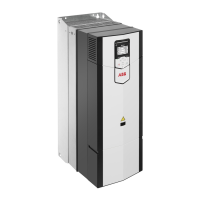
